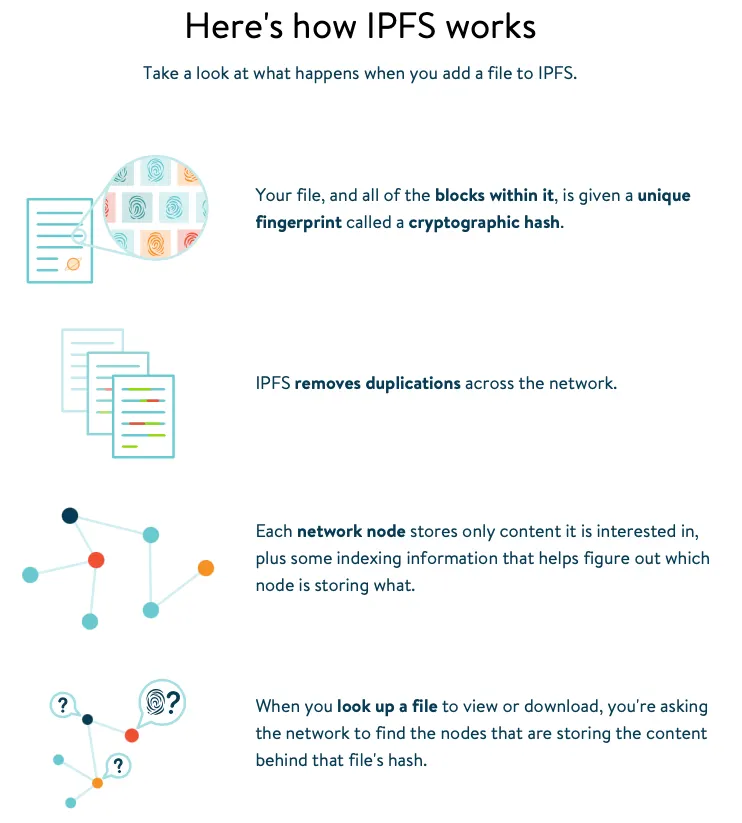In brief
- Decrypt has begun the transition to becoming a web 3 company by porting the site to IPFS.
- IPFS is a decentralized tool that allows data storage to be spread across a network.
- This allows storage to be stored across multiple sites reducing the risk of failure.
One of the core ideas of Decrypt is to use the Web 3.0 technologies that we cover. Decentralized tech isn’t just an idle curiosity to us: In the coming months, our goal is to actually become a Web 3 medium.
To that end, last fall, we started chatting with Juan Benet, one of the seminal figures in the burgeoning movement to decentralize the Web. A Stanford University computer science grad, Benet, 32, is the father of the Interplanetary File System, a remarkable protocol that will help us move Decrypt onto the decentralized web.
How? That’s the idea behind the IPFS Diary, an occasional series that will document our progress.
First Steps
We actually ported over decrypt.co to IPFS in November. Ryan Bubinski, one of our brilliant co-founders, has been overseeing the project. One night not too long ago, I Zoomed with him to get a better understanding of what all was involved in that task, which will be detailed in this Diary in the coming weeks.
But first, we discussed the overall benefit of putting Decrypt, and its archives, on the decentralized web.
Beyond this being just a cool demonstration of the technology, mirroring our content on IPFS “means that our articles will be available to anyone who wants to reach them—anyone who has access to the IPFS network,” Ryan explained. That means Decrypt will be available permanently in a way that the Web as we know it can’t handle.
That sort of confused me. The Web seems pretty permanent to me. In fact there are plenty of people who complain that it’s too permanent, that it never forgets and that stories or information about a person who may have done something stupid as a kid can still affect their reputation years later. Which is certainly true, and which is something that, down the road, we will need to address.

But it’s also true that lots of legitimately useful information is lost when websites go offline due to technical issues, are shuttered or censored.
“The web fundamentally comes down to pages and links between those pages,” Ryan explained. “And it turns out those links, those hyperlinks, are actually very fragile. There are so many pieces of technology that exist just to make sure that those links work. And if any layer of that fails—DNS resolution, the server hosting the page is down, network traffic or availability fails—then the link breaks. And the thing that makes the web so amazing—it's interconnectedness—disappears.”
IPFS, which is a distributed, peer to peer network, composed of countless “nodes” run by anyone who wants to run one, solves that problem.
There are two things that Ryan cited as being critical to the system. “One is that the storage is redundant or replicated across many servers. So if one node of the IPFS network goes down, others are available to take its place. You've got a kind of failover redundancy. And the second thing that's really interesting is the way that links work on the IPFS network—the content itself dictates the link. So any article, or any text (if the text is exactly the same) will always have the same link.”
The linking system itself is pretty ingenious, he said: “The link is just a hash of the content that you're looking for.” In this instance, that cryptographic “hash” is a long string of numbers that creates a one-way link to a digital “snapshot” of the particular content one has pinned to IPFS. “And so that means that the links are far more resilient—they can't really be broken or taken down or hijacked in the way that kind of traditional DNS resolution or IP resolution can be hijacked,” said Ryan. “So we get availability, and we get resilience.”
That sounded pretty good to me. Decrypt preserved through the ages, in a way that no human or government, or hacker could alter or take down. In fact, if you go to the bottom of any Decrypt article, you will see the IPFS “box” logo next to the other various options for sharing. Click that box and you will see a mirror image of the story—preserved, indelibly for eternity, on the Interplanetary File System. Which is unspeakably cool and kind of daunting.
So how did we actually put Decrypt on IPFS?
“We stood up a node,” said Ryan.
NEXT DIARY ENTRY: A Node for News
Sponsored post by Protocol Labs
Learn More about partnering with Decrypt.





